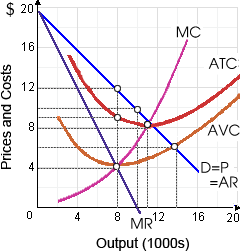Assume that no externalities in production or consumption exist and the income distribution is universally viewed such as “fair.” When this firm could price discriminate perfectly, one condition for socially optimal output would be for: (i) all potential consumer surplus to be converted to economic profit. (ii) roughly $8.50 to be charged for the 11,000th unit of output. (iii) marginal revenue to be zero for the last unit produced. (iv) all potential producer surplus to be converted to consumer surplus. (v) $12 to be charged for the 8,000th unit of output.

Can anybody suggest me the proper explanation for given problem regarding Economics generally?